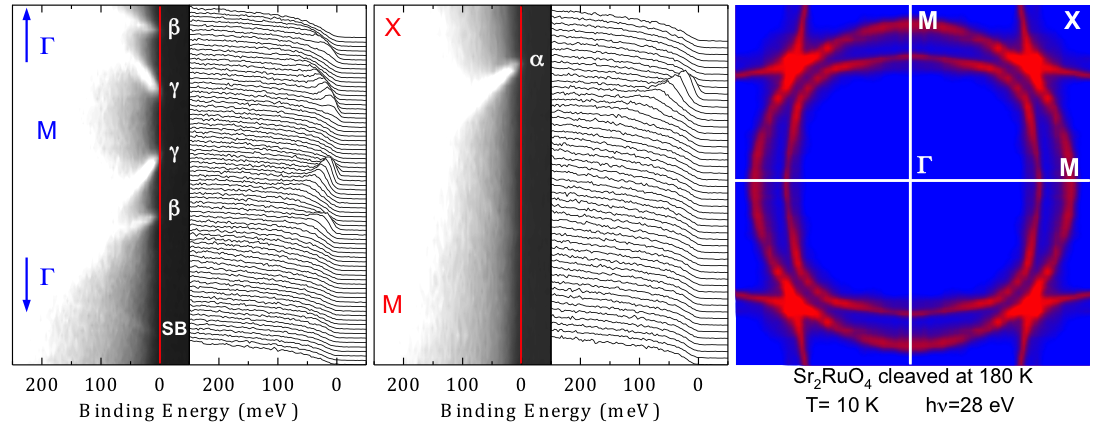Strontium Ruthenate

2RhO4 as revealed by ARPES measurements.Strontium ruthenate compounds were initially thought to be related to high-Tc superconductors: their physics are highly two-dimensional, and the crystal structure of Sr2RuO4 is almost identical to that of (La,Sr)2CuO4. Furthermore, both materials are oxides with conduction occurring in partially filled d-bands (of strontium or copper ions) that are strongly hybridized with the p orbitals of oxygen ions.
However, in Sr2RuO4, superconductivity appears only at low temperatures (1.5 K), in samples with very low residual resistivity, and out of a normal state that is a well-formed Fermi liquid, hence putting them in a different regime than high-Tc superconductors — especially as opposed to the strange metal state present in many cuprates. ARPES investigations concentrated on providing evidence for the prototypical Fermi liquid nature of the strontium-ruthenate compounds, and mapping the rich band structure of this complex material. Results agreed remarkably with de Haas-van Alphen quantum oscillation measurements. As strontium-rhodium compounds also allow a clean mapping of the band structure and exhibit strong Fermi-liquid behavior, they have tbecome a great testing ground for theoretical predictions.

Selected Publications
- A. Damascelli et al. Fermi surfaces, surface states, and surface reconstruction in Sr2RuO4. Phys. Rev. Lett. 85, 5194 (2000)
- F. Baumberger et al. Nested Fermi surface and electronic instability in Ca3Ru2O7. Phys. Rev. Lett. 96, 107601 (2006)
- F. Baumberger et al. Fermi surface and quasiparticle excitations of Sr2RhO4. Phys. Rev. Lett. 96, 246402 (2006)